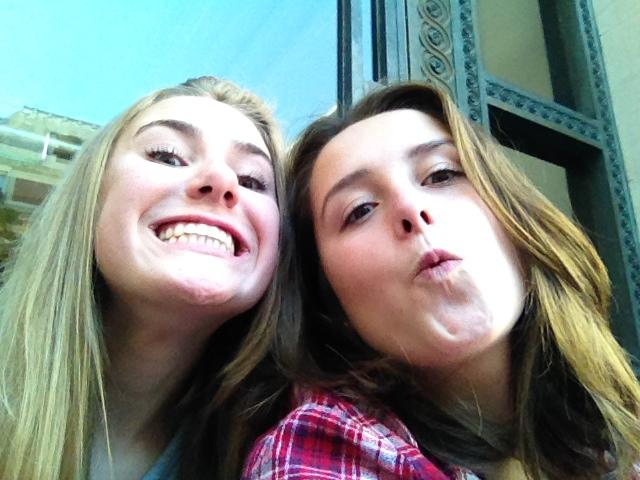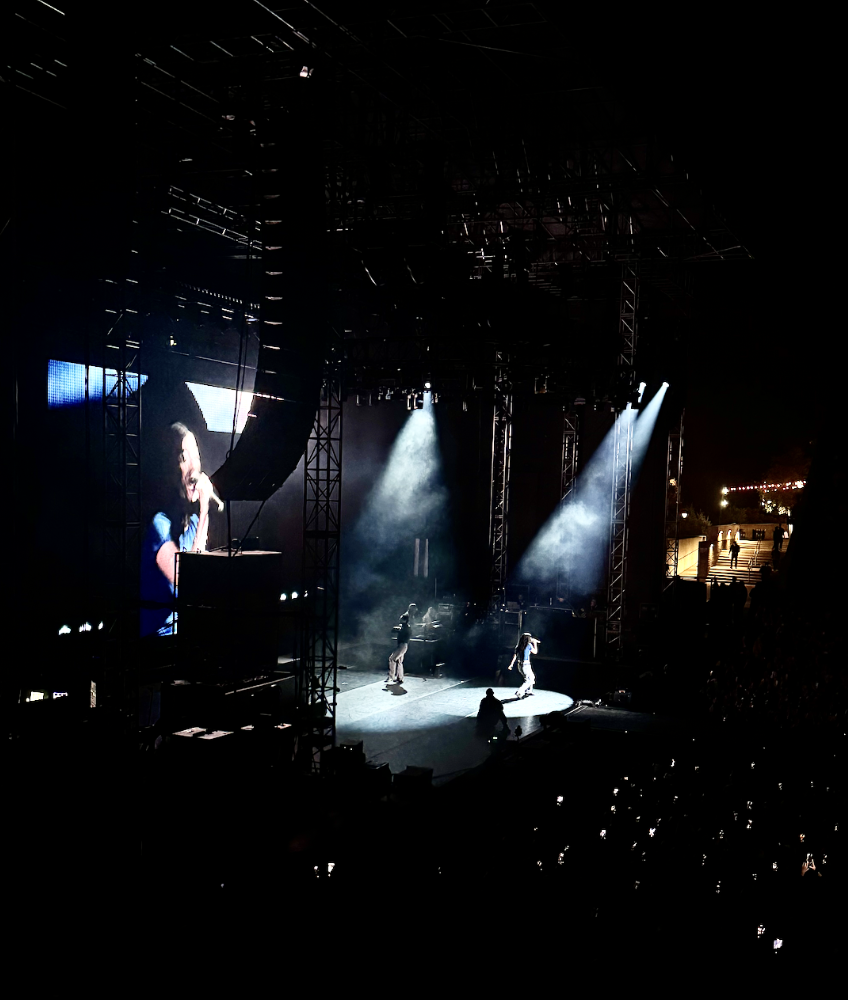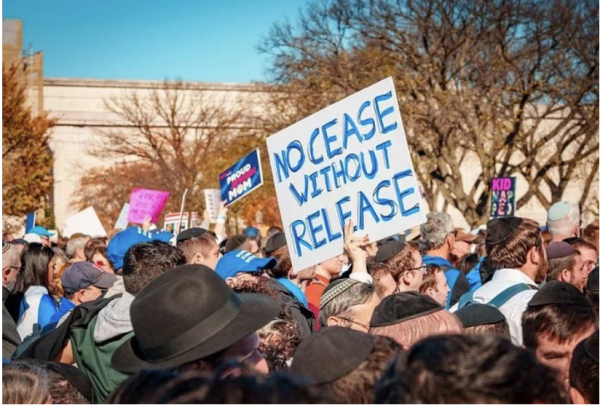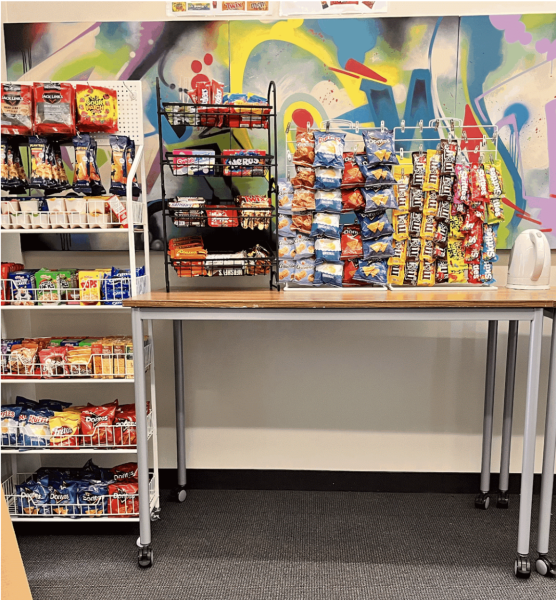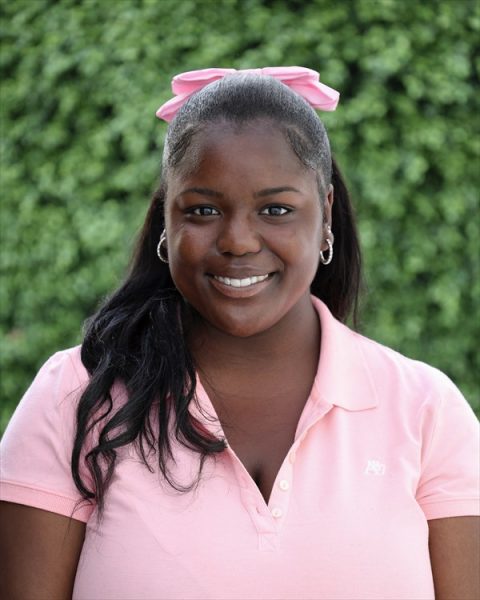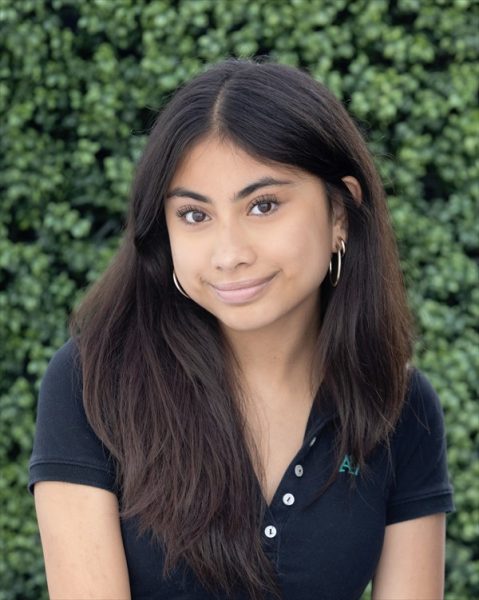Selfies change teenage culture
October 3, 2014
Madeleine Ainslie
Managing Editor
The selfie epidemic, the incessant snapping of self portraits, has invaded the lives of teenagers, largely changing how girls digitally express themselves.
“Selfies are sort of a secularized version of the self portrait,” art history teacher Sonia Evers, who has a Ph.D. in the discipline, said. “Self portraiture is about status, so maybe it’s the essence of democracy that everyone is a valued human being so everyone can be self portrait-ed. It communicates that what everybody does in their lives is of importance.”
Many, like freshman Kelly Rosanelli, find the selfie to be narcissistic and a reflection of the vanity of modern American culture.
“I don’t take selfies because they seem kind of awkward and egotistical,” Rosanelli said. “It seems to be just another way for people to validate their beauty, which gets annoying. I have a Snapchat, but I don’t use it for that reason.”
Selfies can be categorized into “pretty selfies” and “ugly selfies,” according to women’s studies teacher Sarah Garlinghouse.
“There’s a double-sided selfie culture,” Garlinghouse said. “There’s the pretty selfie, which you can control the angle and get the light in just the right spot, but then there’s also the ugly selfie which seems to be more popular among teenage girls.”
The ugly selfie removes some of the stress society puts on girls to constantly be pretty, according to Garlinghouse.
“The point of the ugly selfies is all about getting the strangest, most unattractive pose and expression,” Garlinghouse said. “It removes the pressure of being perfect because the uglier it is the funnier and better the selfie is. It also removes the selfie taker from ridicule. If someone takes a pretty selfie and people don’t think its pretty, then it’s almost like they’ve failed.”
The normal selfie gives the photographer more control over what they look like but also has its disadvantages, according to senior Anna Lyons.
“The ultra-posed selfie tends to give the connotation that someone takes themselves really seriously or are superficial because they appear to be hyper focussed on how they look,” Lyons said. “It’s is a double standard because society scrutinizes women for their beauty — all the while telling them that they aren’t allowed to care if they are pretty or not.”
Judgement is extremely prevalent in society and largely contributes to selfie culture and how people, especially girls, portray themselves, according to Evers.
“Humans, by nature, gravitate towards exaggeration,” Evers said. “Perhaps, the ugly selfie is a form of that attraction to exaggeration, or if people are really trying to make themselves look ugly, they are taking control so that no one can judge whether they are attractive or not because they have forcefully made themselves unattractive.”
For others, however, the ugly selfie is way to express oneself.
“The ugly selfie a lot of times shows someone’s personality more than the pretty selfie,” senior Quinn Moslander said. “An ugly selfie often results in a laugh and more relatability, whereas pretty selfies seem to be more for show.”
The difference in self-expression through selfies speaks to a larger societal issue, according to Garlinghouse.
“It’s sad that the only way we can be ourselves is to make ourselves appear as strange and ugly as possible,” Garlinghouse said.
Society’s standards in conjunction with selfies can further promote young women worrying over their image, according to Garlinghouse.
“The problem with selfies is the amount of time that we’re seeing our own image,” Garlinghouse said. “We see our reflection so much taking selfies and that gives us more opportunities to obsess over what we look like.”
Ninety one percent of teenagers post photos of themselves online, according to Pew Research Center.
“The perfect selfie is idealized art, its unattainable,” Garlinghouse said. “Nobody looks like themselves after a photo has been perfected, crafted, cropped, edited, and put through multiple filters. Because men are biologically more visual in what they find appealing, women, from a historical point of view, have spent more time enhancing their appearance to attract the right partner and selfies are just perpetuating that.”
For others, the problem with selfies is that they keep people from interacting.
“Selfies almost keep people from talking to each other,” junior Antonia De Leon said. “They allow people to not have to ask other people to take a photo of them, because they can just take it themselves. It keeps people in their own bubble.” For Moslander, not having to go out of her way to ask someone else to take the picture is a benefit of selfies.
“IPhones make it easier to document a moment,” Moslander said. “If I’m in the moment and having a great time, I don’t have to remove myself from what’s happening and get someone to take a photo of me, I can just whip out my phone and take a picture of me and my friends.”
The selfie was largely promoted by the introduction of the camera phone and was mainstreamed in 2010 with Apple’s iPhone 4, which featured a forward facing camera, making it even easier for selfies to be snapped and shared, either privately by text message, or publicly through uploading to various social networks.
“Selfies absolutely depend on the cellphone and really came into being because of the iPhone and the improvement of the camera within the iPhone,” Moslander said. “Taking a selfie using a bigger camera is much more difficult.”
The act of sharing selfies is facilitated by social media platforms, especially Snapchat, a photo messaging app which allows its 60 million users to take both videos and photos then add up to 31 characters of text or drawings, before sending it to other approved users of their choosing, according to the Pew Research Institute.
“A lot of times selfies are used as an extension of a conversation to counteract some of the negative parts of texting, which can be misconstrued, perhaps to add more clarity to the message,” Charis Denison, owner of Prajna Consulting, a consulting agency specializing in teens and families, said.
A key component of Snapchat is videos and pictures can only be viewed for a maximum of 10 seconds, unless a recipient takes a screenshot of the image, in which case the sender is be notified. This particular feature is appealing for many users, including junior Antonia deLeon.
“With Snapchat people are able to have a photo that’s only there for a short period of time, making it less permanent,” De Leon said. “Since Snapchat notifies the sender when a screenshot has been taken, people can have more control of where that photo ends up. It gives people more of a sense of security that that photo won’t be passed around.”
Photos that have been screenshotted still can be put up on the Internet, where the subject of the image no longer has control over its usage.
The majority of Snapchats are selfies or pictures of surroundings sent primarily by teenagers, with over 700 million photos uploaded to the service each day, according to Fortune.
“Snapchat allows people to have essentially, face to face conversations without the time commitment of FaceTime,” Lyons said of the video chat application.
Social media platforms have become a primary source of connection among American teenagers, with 29 percent saying that apps like Snapchat and Facebook are their main forms of communication with their friends, according to Fortune.
“Snapchat makes communication more expressive,” junior Victoria Oestermann said. “I’m a little more foolish on Snapchat. I mainly send silly selfies of me making weird faces to my best friends because I know only they will see them.”
Snapchat helped integrate selfies into the world of communication and reversed a lot of the narcissistic conventions surrounding them by turning the selfie into means of expression rather than documentation, according to Moslander.
“Selfies are much more forms of communication than they are works of art,” Moslander said. “I think a lot of times sending selfies through Snapchat is better than texting because I can’t put my facial expression into a text, and sometimes that added feature of a picture helps get the point across.”
While many see selfies solely as a form of communication, Garlinghouse also views the images as an artform.
“I think selfies are a form of self-expression,” Garlinghouse said. “It’s a kind of artwork. In the same way that Frida Kahlo painted a self-portrait or Cindy Sherman portrays herself in a different identity, selfies are a way of exploring who someone is and how they want the world to them.”
Girls take selfies more often than boys with 50 percent of teen boys sharing selfies on snapchat compared to 77 percent of teen girls, according to Digital Market Ramblings.
“Girls live in the moment and are really social and are used to being looked at and trying to appear certain ways,” Denison said. “I think that selfies are sort of an extension of that, not just in a superficial way but they have been socialized a lot more to be photographed and interact in a more visual way.”
Worldwide, over a million selfies are taken each day, 14 percent of which will be digitally enhanced according to Media Bistro.
The obsession with the self portrait is displayed in the media as well. Not only will ABC television debut the new primetime show “Selfie” on Tuesday, but the band Chainsmokers released a song titled “#SELFIE” in January, which quickly made it on to Billboard’s Top 100. President Barack Obama even took a selfie with British Prime Minister David Cameron and Denmark’s Prime Minister Helle Thorning Schmidt at Nelson Mandela’s memorial service.
“Selfies allow people to position themselves in a certain way and to catch a certain light,” Moslander said. “They allow people to have total control over how the picture is taken because the subject and photographer are the same person.”
People are so concerned about their image that many don’t like taking pictures as they don’t like the way they look in the final picture, according to Evers. Selfies allow the subjects of the photo to see themselves before the picture is snapped.
“In the past it seems like many people hated having their picture taken,” Evers said. “Maybe selfies are also showing a greater acceptance of who one is because people aren’t constantly worrying about looking great for the picture, they’re just documenting their life as it goes through and showing themselves as they really are.”
Women spend almost 40 percent more time daily with social media sites than men, 3.6 hours versus 2.6 hours, according to Burst Media.
“Humans want to feel important, significant and seen,” Denison said. “A selfie, superficial as it is, is a really quick way to achieve that.”
For many sharing the selfie is the point of the picture itself, as it acts as a way to prove that one has done something or been somewhere, keeping friends and followers informed about what one is doing, according to Garlinghouse.
“It’s another way of telling a story,” Evers said. “If someone takes selfies doing all of these daily things then its a shorthand way of documenting moments in your life. It’s sharing your life, and that’s okay, but the con is that it can end up being rather narcissistic.”
Selfies are not unique to American culture. Most selfies are taken by Australians, followed by Americans and then Canadians, according to the Pew Research.
“Selfies are less cultural and more generational,” Evers said. “Maybe there’s a perspective that the young have been raised by parents who focus a lot of attention and build their lives around their children. Those children — my children are as well — are used to the world almost circulating around them and maybe that’s where selfies have emerged from.”
The act of taking a selfie says a lot about the culture of modern day life, according to Lyons.
“Nobody wants to take the time out of the day to do the smaller things anymore,” Lyons said. “We all want things done fast and want to have instant conversation and instant everything really. I think selfies represent that.”



